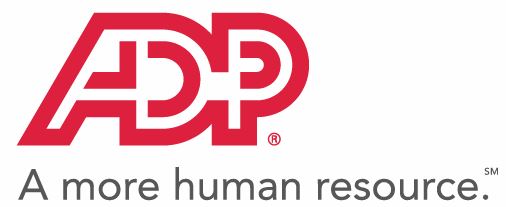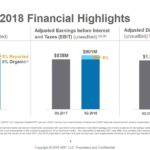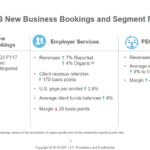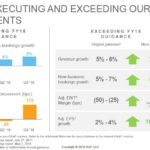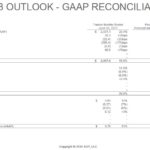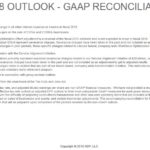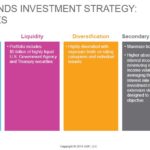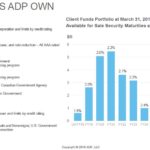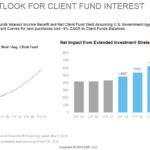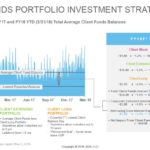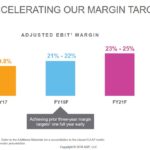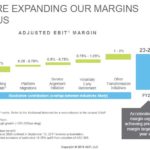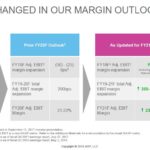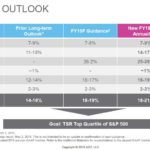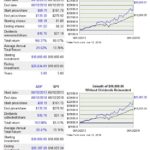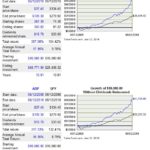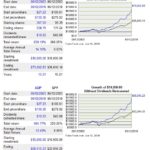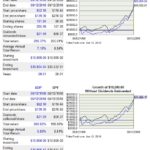Contents
Summary
- ADP reported Q3 results May 2 in which it announced an upward revision in its FY2018 outlook.’
- At the June 12th Investor Day, ADP indicated it is accelerating the pace of margin expansion and it now targets its prior 3 year margin targets to occur one year sooner.
- The anticipated increase in interest rates in the US will aid ADP with its Client Funds Portfolio Investment strategy.
- ADP has increased its dividend for 43 consecutive years. The dividend payable July 1, 2018 was increased to $0.69/share from $0.63/share and a further dividend increase will likely occur in November 2018.
- In my February 1, 2018 article I viewed ADP as overvalued. I now view ADP as even more overvalued.
Introduction
I initiated a position in Automatic Data Processing (NADAQ: ADP) in July 2006 and it is one of my top holdings; shares are held in a retirement account and not in the FFJ Portfolio.
Stock charts fail to account for the level of appreciation in the value of my ADP investment given that they exclude the performance of my Broadridge Financial Solutions (NYSE: BR) and CDK Global (NASDAQ: CDK) shares which I received (and subsequently added to) when these two entities were spun off from ADP in 2007 (BR) and 2014 (CDK).
On May 2, 2018, ADP released its Q3 2018 results and on June 12, 2018 it held its Investor Day in which it raised its financial outlook for FY2019 – 2021. I, therefore, thought it would be an opportune time to revisit ADP to determine whether a further investment is warranted at this juncture.
Subscribers can access previous ADP articles where were posted February 1, 2018 (ADP – Waiting for a Pullback Before I Acquire More Shares) and August 11, 2017 (ADP Stock Analysis FY2017 – Pershing Square’s Interference is Not Warranted).
Q3 2018 Financial Results and FY2018 Investor Day
ADP’s Q3 results can be accessed here and a Press Release regarding the topics addressed June 12, 2018 can be found here.
Source: ADP – Q3 2018 Earnings Release May 2 2018
Source: ADP – Investor Day Presentation June 12 2018
ADP holds significant Client Funds in Trust ($33.647B as at March 31, 2018). While the majority of these funds must be disbursed within the short-term, a few years ago ADP enhanced its strategy toward the use of these funds in an effort to generate additional revenue from the component of the Trust Funds held over extended and long timeframes. This strategy has generated additional interest revenue and ADP stands to benefit from a rising interest rate environment.
Source: ADP – Investor Day Presentation June 12 2018
2019 Guidance
At the Investor Day meeting, management indicated that it would be accelerating the pace of margin expansion. It is now targeting its prior 3 year margin targets one year sooner.
Source: ADP – Investor Day Presentation June 12 2018
Credit Ratings
Prior to April 2014, ADP was one of a very small group of companies whose long-term debt had been accorded the coveted AAA rating by the credit rating agencies. In April 2014, Moody’s downgraded ADP to Aa1 and in August 2015 it was further downgraded to Aa3. Even with the downgrades, ADP is still highly rated with Aa3 being the lower tier of the High Grade group.
S&P Global downgraded ADP’s long-term debt to AA in April 2014. This is the middle tier of the High Grade group.
I am very comfortable with the level of risk I have assumed by way of my investment in ADP.
Valuation
At the time of my February 1, 2018 ADP article, ADP had closed at $123.63 on January 31, 2018. Adjusted diluted EPS projections for FY2018 were ~$4.16 which resulted in a forward adjusted diluted PE of 29.72. I viewed that level as somewhat elevated and indicated I would patiently wait for a pullback.
On March 23, 2018 ADP had pulled back to ~$109. At that price, the forward adjusted diluted PE was ~26.2 (~$109/$4.16). Despite that pullback I still viewed ADP as a bit expensive.
Fast forward to the present and ADP’s stock price has experienced a significant run-up in a very brief period; it currently trades at ~$139.
Management has revised FY2018 adjusted EPS guidance to 16 – 17% growth from $3.70 reported for FY2017. On this basis, we can anticipate adjusted EPS of ~$4.29 – ~$4.33.
With ADP trading at ~$139, the forward adjusted PE of ~32.1 – ~32.4 is even greater than at the time of my previous review.
While ADP might be a fine company, I just can’t bring myself to acquire additional shares at the current valuation.
ADP’s dividend history can be found here; it has increased its dividend for 43 consecutive years.
One of ADP’s 3 investment priorities for the use of cash to enable sustainable value creation is the return of cash to shareholders via dividend and shares repurchases; it targets a 55 – 60% dividend payout ratio.
The dividend history on the company’s website has not yet been updated to reflect the April 11, 2018 declaration of a $0.69/share regular quarterly dividend payable July 1, 2018 to shareholders of record on June 8, 2018; this is a ~9.5% increase from the previous $0.63/share quarterly dividend. This dividend increase represents a return to shareholders of a portion of the benefits from the Tax Cuts and Jobs Act of December 2017.
The new $2.76 annual dividend represents a dividend yield of ~2%.
This forward dividend yield is slightly conservative in that in addition to the imminent new $0.69/share dividend, ADP’s Board of Directors anticipates consideration of another dividend increase in November 2018 which would be consistent with ADP’s historical pattern of annual dividend increases.
In addition to rewarding shareholders with regular dividend increases, ADP has a long-standing share buyback program to return excess cash. This is confirmed by the steady reduction in the number of outstanding shares. In FY2008, there were ~527 million shares outstanding. At FYE2017, there were 445 million shares outstanding. For the most recent quarter end (March 31, 2018) there were 441.7 million shares outstanding.
Historical Returns
If we look at ADP’s performance over 5, 10, 15, and 20 year timeframes we see that ADP’s total investment returns with reinvested dividends greatly exceed those generated by the S&P500 over the 5 – 15 year periods; the sudden surge in ADP’s stock price certainly has some impact on the magnitude of the variances.
Interestingly, the return over the 20 year time horizon is not that much different from the S&P500.
Source: TickerTech.com
As noted at the outset of this article, however, the above noted charts grossly understate the returns generated from your ADP investment if you owned ADP shares before the BR and CDK spin-offs and held on to these shares.
Final Thoughts
I do not dispute that ADP makes for a great long-term investment but in my February 1, 2018 article I indicated I would wait for a better entry point. ADP did pullback subsequent to that article but I still viewed the stock as being somewhat expensive. I now view ADP as being even more expensive.
While earnings projections have been revised upwards, I am of the opinion ADP is even more overvalued than in February 2018. I am of the opinion that investors have tossed caution to the wind and that the stock price of many companies, of which ADP is one, is now detached from the underlying fundamentals of the business.
I am in no rush to add to my existing ADP position and will continue to patiently wait for its stock price to retrace to a low 20s PE multiple….even if I have to wait several months!
I hope you enjoyed this post and I wish you much success on your journey to financial freedom.
Thanks for reading!
Note: I sincerely appreciate the time you took to read this article. Please send any feedback, corrections, or questions to charles@financialfreedomisajourney.com
Disclaimer: I have no knowledge of your individual circumstances and am not providing individualized advice or recommendations. I encourage you not to make any investment decision without conducting your own research and due diligence. You should also consult your financial advisor about your specific situation.
Disclosure: I am long ADP.
I wrote this article myself and it expresses my own opinions. I am not receiving compensation for it and have no business relationship with any company whose stock is mentioned in this article.


